How to help Wisconsin's disappearing native bees in your yard
The homeland of the federally endangered rusty patched bumble bee has shrunk by 90% in the past 20 years, yet the beneficial, fuzzy native bee can still be found in the backyards of Milwaukee.
Once found in 28 U.S. states and two Canadian provinces, the rusty patched survives in just a handful of states and one province. According to the current range map, Wisconsin is in the middle of the dominant contiguous chunk of what’s left in the U.S., an area that includes northeastern Iowa, northern Illinois and Minnesota, a state that’s made efforts in recent years to help the bee.
As recently as 2017, the rusty patched became the first bee species protected under the federal Endangered Species Act by the U.S. Fish & Wildlife Service due to its steep decline.
This helped sound the native bee alarm for professionals and backyard gardeners alike.
The good news is gardeners can help. Overseeing land ranging from modest urban lots to sprawling suburban yards, gardeners could even be considered crucial.
RELATED: Must-have plants to help Wisconsin's native bees
Small yards make a difference
West Allis homeowners Marian and Ben French are living proof that the smallest of yards can make a difference. Since purchasing their home on less than a quarter-acre, they began gradually supplanting about three-quarters of their turf grass with native and flowering plants beginning in 2014.
The difference has been startling. Marian French says it’s become an “oasis” for bees and other wildlife.
“It’s just kind of amazing if you just sit still for a while. My husband and I call it bee watching. Sit by a plant and see how many visit,” French said. “I’ve been able to pick out leaf cutter bees, mining bees, carpenter bees ... couple types of bumble bees,” she said. “And, lots of queen bees in the spring.”
Specifically, French said, bees flock to prairie smoke in early spring, followed by shooting star, both of which are native early bloomers. Later in the season, bees cover their catmint and wild bergamot.
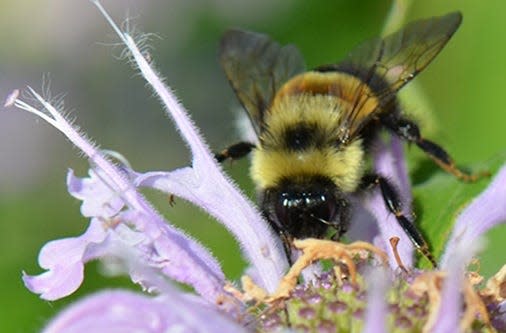
RELATED: Hummingbirds are returning. Here’s how to share your yard with these tiny, beloved birds.
RELATED: Micro prairies: No yard is too small to go with earth-friendly native plants
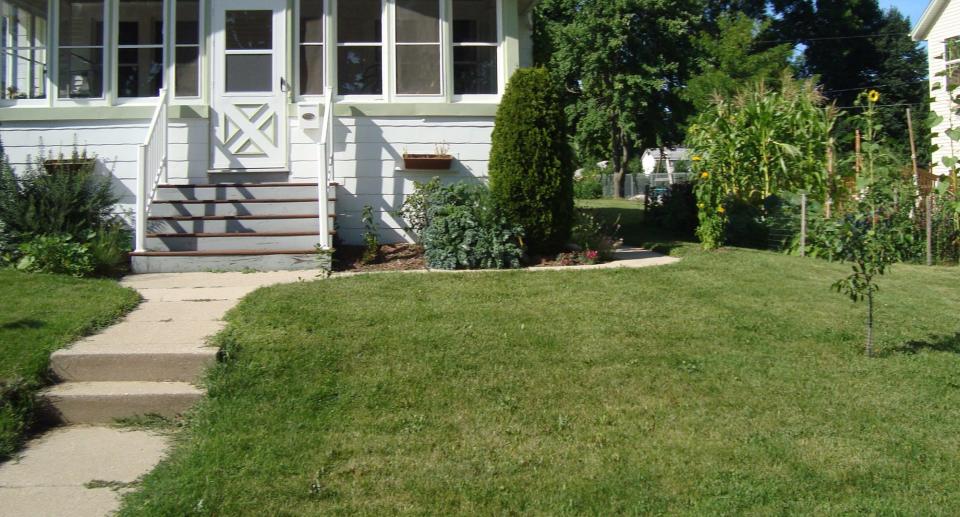
A member of the Milwaukee Southwest/Wehr chapter of Wild Ones, French has purchased many native plants from Johnson’s Nursery in Menomonee Falls, where she likes to peruse the wares in person, plus she orders from Prairie Nursery in Westfield.
French said it feels great to make such a positive difference just outside their front door. “If you plant it, they will come. It’s true,” she said. “Some of these native bees don’t fly very far. Our yard is their world. It always blows my mind; I don’t know how they found us.
“Even if you can plant a couple flowers, it can make a big difference.”
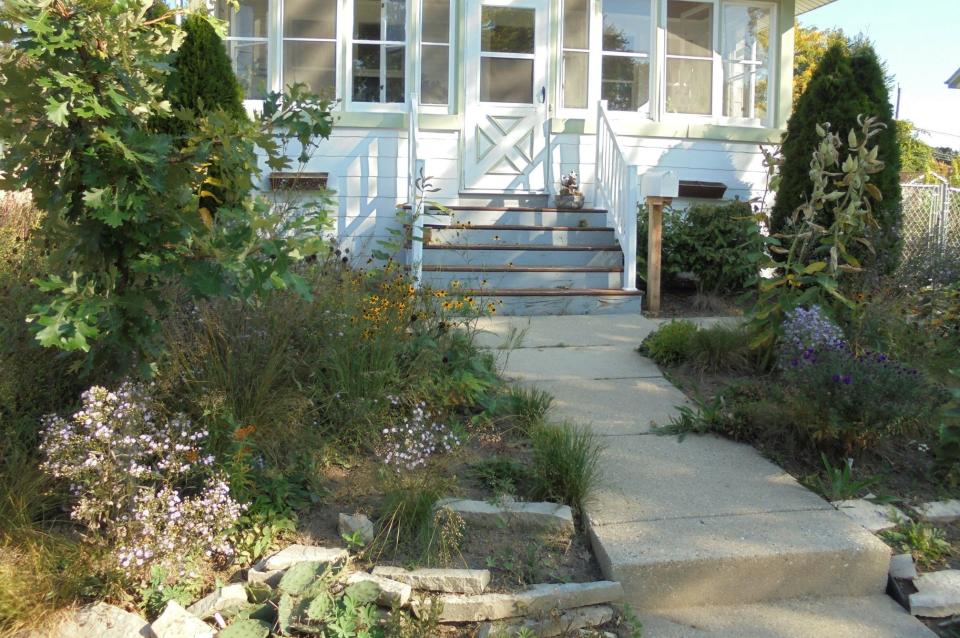
Bee expert Jay Watson agrees homeowners can be key participants. In fact, anyone with a yard is “hugely important,” he said, especially when considering many yards add up to an aggregate impact on the ecosystem.
“It’s a collective thing, right? That just keeps building up. Perfect example, the rusty patched bumble bee, it’s found in Milwaukee, Madison. It’s found in urban areas,” said Watson, a conservation biologist with the Wisconsin Department of Natural Resources. “One of the most widespread habitats is lawns. There is a lot of opportunity there.”
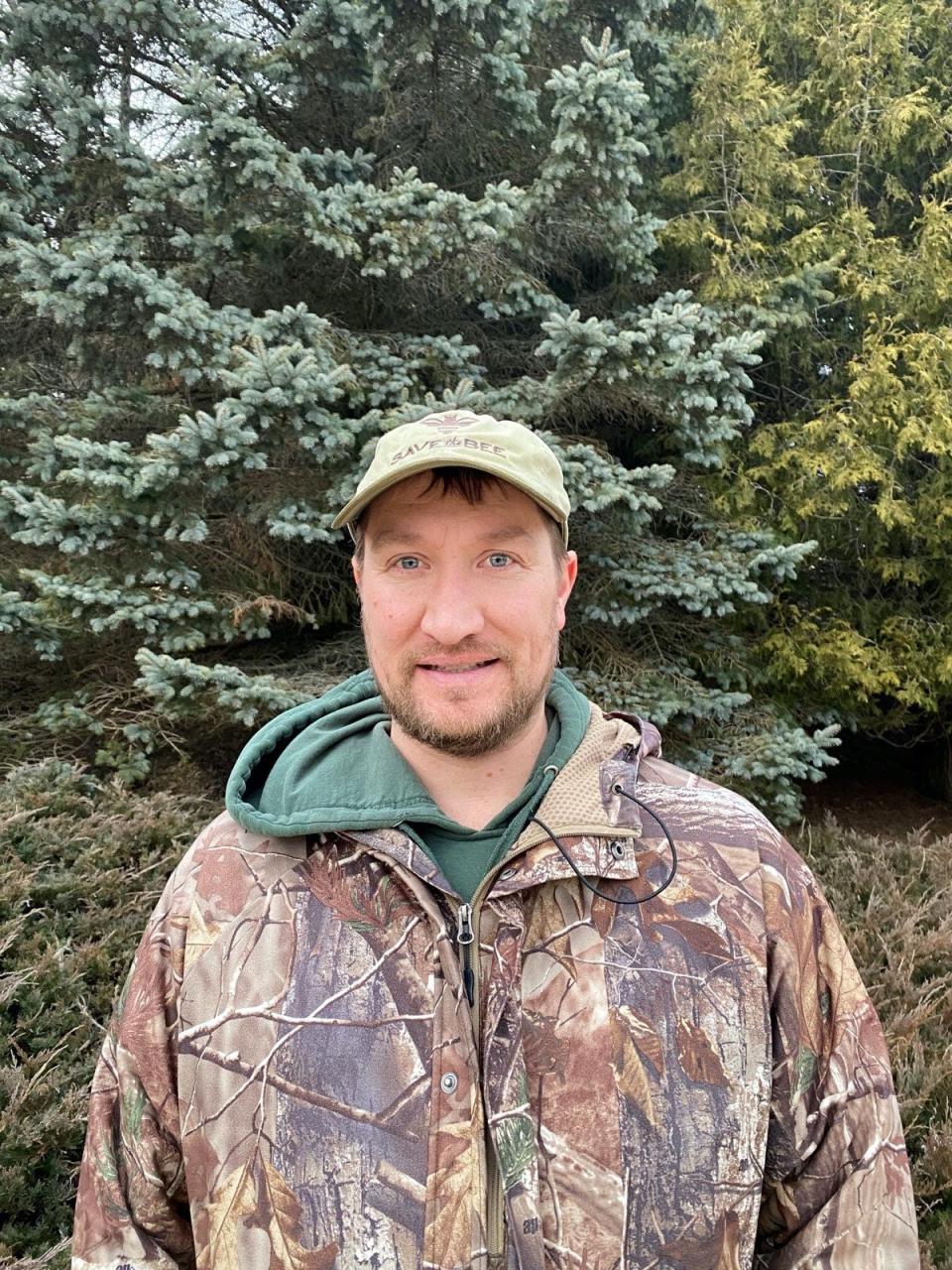
Native bee alarm
Even though native bees, including the rusty patched, are vital to the environment and food supply, their plight has been largely ignored or unknown to many, even gardeners and bee professionals.
“People really started noticing it in the early 2000s,” Watson said. “It was a big wake-up call in the bee world.”
Native plant garden curator Susan Carpenter with the University of Wisconsin Arboretum in Madison said they detected the rusty patched at the Arboretum about 10 years ago. “That started us on this voyage of discovery,” she said. When the rusty patched was declared endangered, she said, “people just went crazy on that.”
Native bees are the unrivaled workhorses of team pollination, far more efficient than nonnative honey bees in pollinating indigenous plants, trees, crops and even backyard tomatoes. Tomato plants will produce more and larger fruits with the aid of bumble bees, according to Watson. Specifically, bumble bees are the chief pollinators of many economically important crops in Wisconsin, such as blueberries, strawberries, raspberries, pears, squash, cranberries, apples, cherries and beans.
By comparison, honeybees were introduced by Europeans in the 1600s for agricultural purposes. They do not know how to pollinate tomato flowers and are comparatively poor pollinators of pumpkins, cherries, blueberries and cranberries.
Native bees were pollinating plants long before the arrival of honeybees, which promptly managed to escape domestication, according to the USDA. As a result, some honeybees have become feral. Others are kept as managed bees, or maintained by hobbyists or honey producers.
To illustrate the difference between honeybees and native bees, it takes about 20,000 honeybees to pollinate an acre of apple trees, compared with only 250 native mason orchard bees, according to the UW-Extension.
It’s an interesting fact to chew on the next time you savor a slab of apple pie.
Managed bees (sometimes referred to as farmed, domesticated, commercial, greenhouse or rented bees) are usually honeybees but can also be native species. Since managed bees travel around the country for agricultural pollination, they are increasingly becoming cause for concern as they could be spreading diseases and parasites to wild bees, according to Watson.
Managed bees also can compete with wild bees for scarce food resources.
Overall, both native and nonnative bees pollinate about 75% of fruit, nuts and vegetables grown in the U.S., according to the USDA.
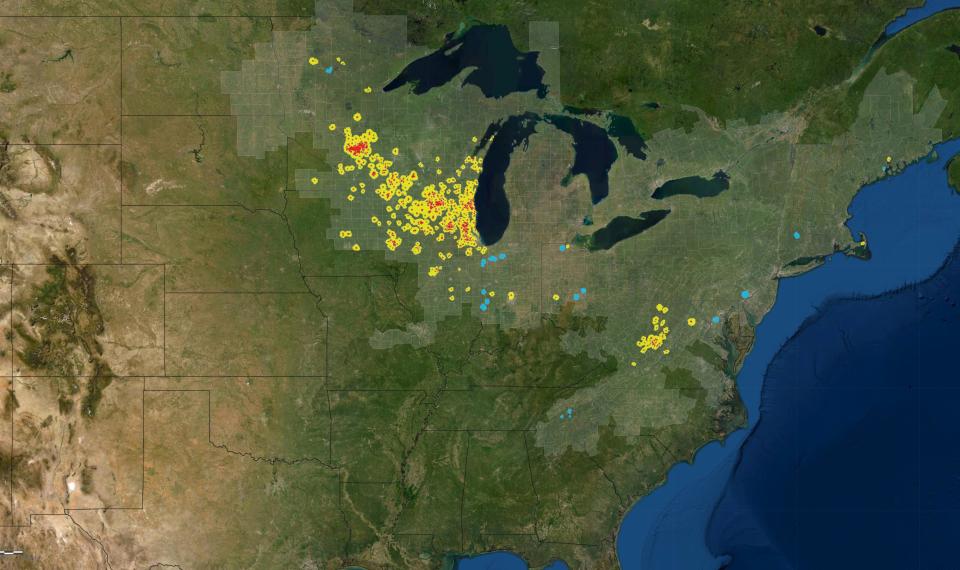
Pollinating machines
Think of native bees as pollinating machines, not just for our food supply but for the natural world, as well. In wild areas, farmland, commercial properties and yards, native bees pollinate and benefit plants that feed and house other animals, even fellow pollinators such as butterflies.
“Bumble bees are the main pollinators of the host plants of monarchs,” Watson said. “Bumble bees are a better predictor of ecosystem health. Monarchs leave half the year,” he said, in contrast to bumble bees, which are “year-round residents of Wisconsin. Reproducing queens survive the winter.”
Those reproducing queens that emerge in spring present a major opportunity for property owners, according to plant curator Carpenter.
For starters, she said, early spring blooming plants are vital. “They are super important for bumble bees and any bees,” Carpenter said. “The queens have been underground for six months.
“In southeastern Wisconsin, the average first date for emergence would be April 14. These bees are big, they are buzzing, they have to find resources,” she added.
Carpenter explained the queens need to set up a colony, lay eggs, provide pollen for eggs, then raise 30 worker bees all while putting up with inclement weather. “She has to do this all by herself,” Carpenter said.
Bee-friendly options for early blooms include serviceberry trees and native flowers shooting star, wild geranium, Virginia bluebells and wild lupine.
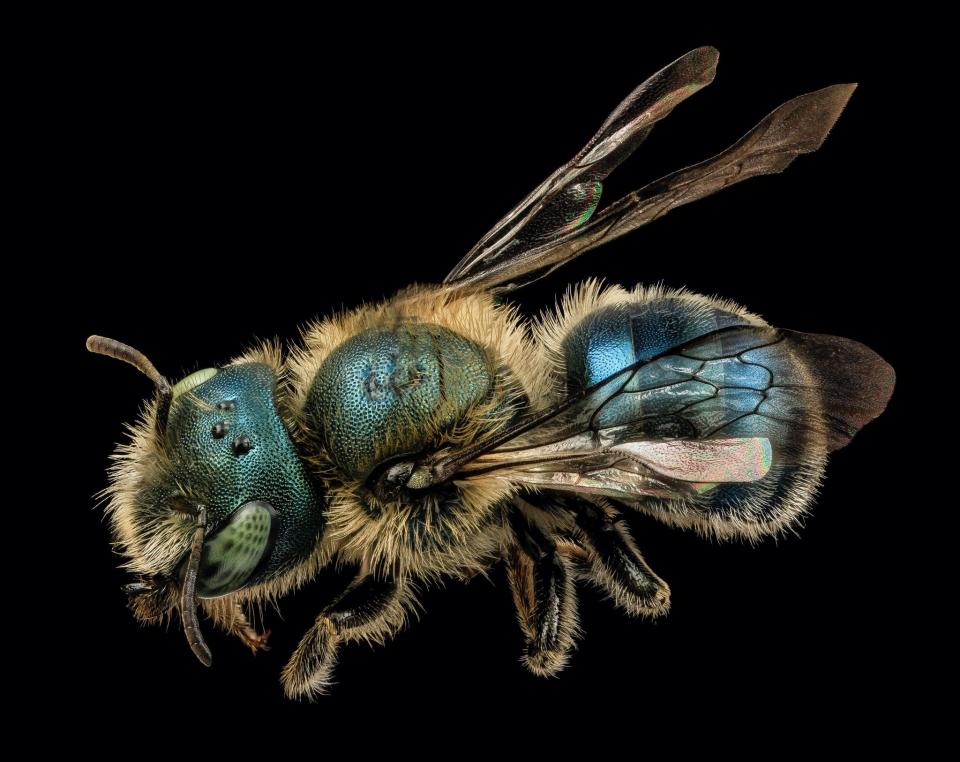
Other steps gardeners can take throughout the year include:
Provide seasonlong flowers using native plants appropriate to the place.
Forgo insecticides.
Protect nesting sites. Nests can be as large as a softball and found in chipmunk holes, compost piles, at the base of tall grasses or near basements.
Join Wisconsin’s Bumble Bee Brigade, a volunteer group of citizen scientists. Much is still unknown about native bees, and the group has been instrumental in helping them.
Minimize spring yard disturbance with a bee-sensitive cleanup. Hold off removing last year’s stems, dried flowers and leaves until sometime in mid-April or when temperatures consistently reach the 50s. Pile debris onsite. “Don’t work so hard to be so manicured,” Carpenter advised.
Concerning pesticide use, Watson added that applying herbicides to plants such as dandelions when they are in bloom is extremely harmful. Research has shown it can be lethal or cause bees to become less fit and less reproductive, he said. Remember, once a dandelion flower has opened, it will quickly attract a bee.
“It’s bad, basically,” he said. “If you’re going to do that, don’t do it while the plant is in flower . . . do it pre-flower.”
No Mow May is another initiative to help native bees, Watson said. Adopted by municipalities beginning with Appleton in 2020, No Mow May suspends weed ordinances to allow yards to go uncut in May when bees emerge. Since then, other cities in and outside of Wisconsin have hopped on the no-mow bandwagon.
White clover in lawns is especially important as gap fillers for bees from late spring into early summer, Watson said. Some bees forage for only a few critical weeks.
RELATED: Don't pull out that lawn mower just yet; Oshkosh Common Council approves No Mow May
Bellwether bee?
The rusty patched is just one of 400 native bee species found in Wisconsin. Only 20 of those 400 native species are bumble bees. Of those bumble bee species, at least 11 are in serious decline. All bumble bees found in Wisconsin are native, Watson said.
Other native bees include ground-nesting mining bees; small greenish sweat bees that will harmlessly land on your arm; leafcutter bees that line their nests with round leaf cutouts; and metallic mason bees that nest in hollow areas they augment with mud.
So, will focusing on the rusty patched help all native bees? Are they the bellwether bee? Watson thinks it’s possible, as they are found in areas with what he termed “bumble bee diversity.” It also doesn’t hurt that the rusty patched and other bumble bees are iconic, docile, captivating and easily recognized by the youngest of toddlers.
“They are not aggressive. They definitely are pretty cute, though,” Watson said.
Many bee species rarely sting unless provoked or protecting their nest. More often, insect stings come from hostile yellowjackets that are not bees but predatory wasps.
Just west of Wisconsin, Minnesota promoted the rusty patched to official state bee in 2019 and set aside nearly a million dollars to convert grass lawns into bee-friendly spaces. In 2021, the Minnesota DNR unveiled a license plate featuring both the rusty patched and monarch that raises funds to help preserve wildlife habitat.
Wisconsin has no state bee, but it did name the nonnative European honeybee as state insect in 1977.
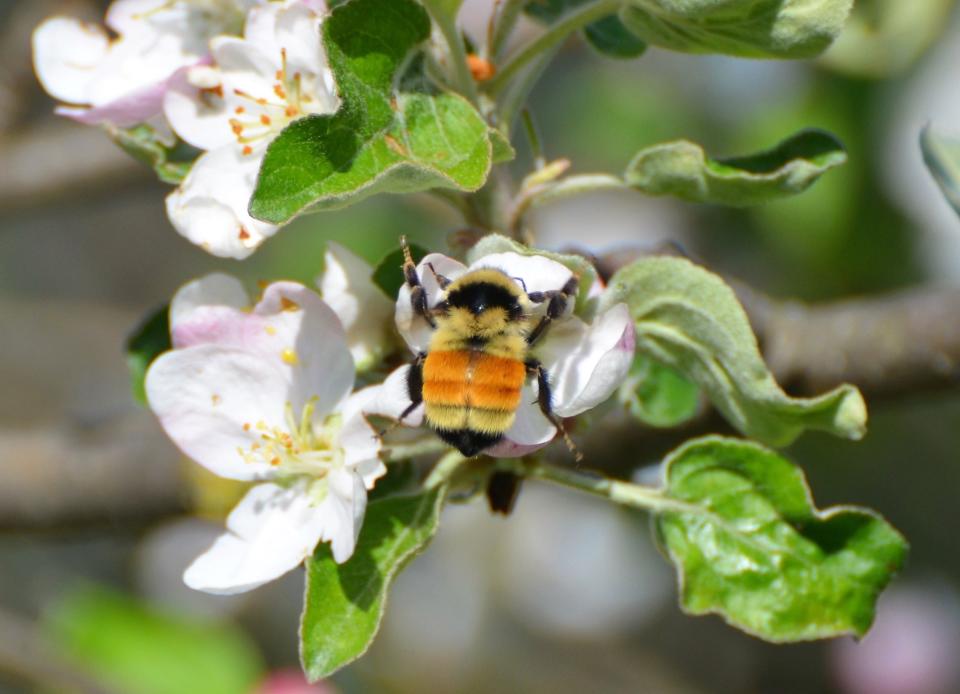
Functional yards
Overall, Watson urged homeowners to change their thinking of ideal yards from being “perfect” to “functioning ecosystems.”
This would include reserving wild, undisturbed areas in the yard, possibly with brush piles that could be designated No Mow Ever areas. “If you can leave a certain area that’s more natural and have some of that habitat, that’s the best way to go,” he said. “There are critters living in that. There are bees living in there. Leave habitat for these species. Change the mindset.”
Jennifer Rude Klett is a Wisconsin freelance writer of Midwestern life and author of “Home Cooking Comeback,” contact her at jrudeklett.com.
*****
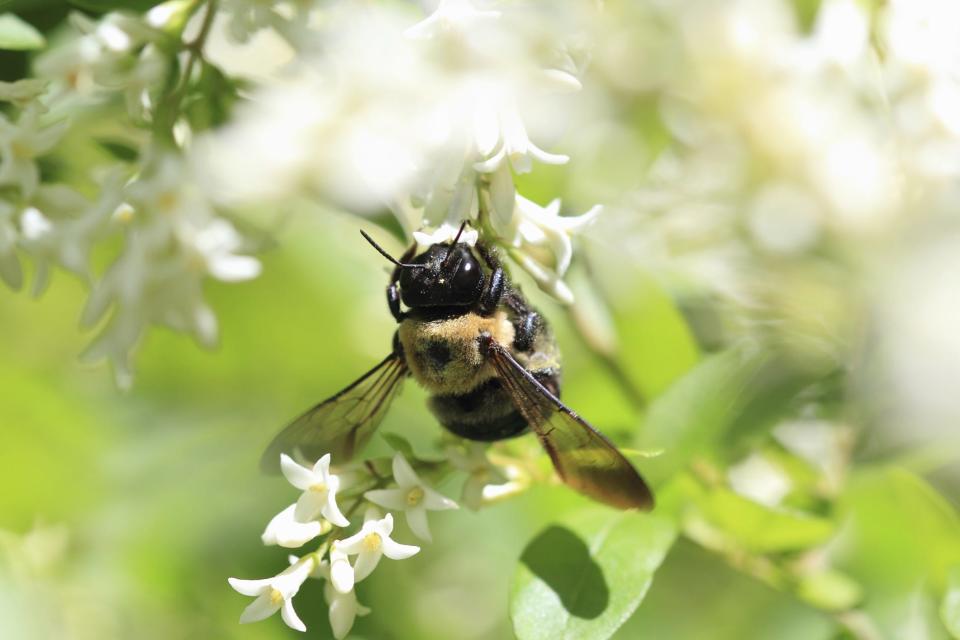
More information on native bees
Here are some resources for those hoping to help native bees in their yards.
Wisconsin DNR Bully for Bees article: https://bit.ly/3x9QVvP
UW-Extension Wisconsin bee identification guide: hort.extension.wisc.edu/articles/wisconsin-bee-identification-guide/
UW-Extension Support Native Bees article: https://bit.ly/3jBZCHr
U.S. Fish and Wildlife Service Rusty Patched Bumble Bee: fws.gov/species/rusty-patched-bumble-bee-bombus-affinis
Wisconsin Bumblebee Observers Facebook public group: facebook.com/groups/555238811914604
*****
*****
No Mow May
On April 12, after this article was written, the Zoological Society of Milwaukee endorsed No Now May to protect native bees. Don't clear your yard early, the society urged in a statement, because bees hibernate under leaf piles and branches and in holes in the ground.
Also, the release noted, "our lawns naturally grow the resources that bees require to survive, including dandelions, clover, and naturally occurring spring flowers," such as violets.
Two years ago, Appleton became the first city in the United States to adopt No Mow May, suspending lawn-height rules for May to allow natural growth, and several Wisconsin cities have followed. The Zoological Society encouraged homeowners to check local ordinances.
For more information, see zoosociety.org/NoMowMay.
Our subscribers make this reporting possible. Please consider supporting local journalism by subscribing to the Journal Sentinel at jsonline.com/deal.
DOWNLOAD THE APP: Get the latest news, sports and more
This article originally appeared on Milwaukee Journal Sentinel: How to help Wisconsin's disappearing native bees in your yard

